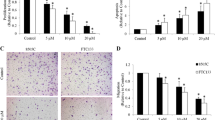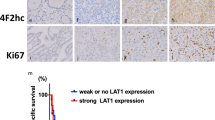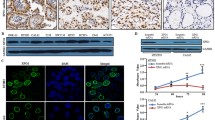Abstract
Anaplastic thyroid carcinoma (ATC) is the most aggressive type of thyroid malignancies and resistant to chemotherapy. Novel therapeutic strategy is required for better management of ATC. In this work, we show that artesunate, an antimalarial drug, is active against chemoresistant ATC cells. Artesunate dose-dependently inhibits growth and induces apoptosis in chemo-sensitive (8505C and KAT-4) and -resistant (8505C-r and KAT-4-r) ATC cells, and acts synergistically with doxorubicin. Using multiple xenograft mouse models, artesunate is active against chemo-sensitive and -resistant ATC cells in vivo at doses that do not cause toxicity in mice. Our mechanism analysis reveals that artesunate acts on ATC cells through suppressing mitochondrial functions without affecting glycolysis, leading to oxidative stress and damage, regardless of whether they are sensitive or resistant to chemotherapy. Interestingly, KAT-4-r cells demonstrate decreased glycolysis, increased mitochondrial membrane potential and mitochondrial respiration compared to KAT-4 cells whereas such phenomenon is not observed between 8505C and 8505C-r cells. This suggests that some but not all ATC cells gain enhanced mitochondrial biogenesis after prolonged exposure to chemotherapy drug, which may explain the different sensitivities of 8505C-r and KAT-4-r to artesunate. Our work demonstrates that artesunate is a potential addition to the treatment armamentarium for ATC, particularly those with chemoresistance. Our findings also highlight the therapeutic value of targeting mitochondria in chemoresistant ATC.




Similar content being viewed by others
References
Augustin Y, Krishna S, Kumar D, Pantziarka P (2015) The wisdom of crowds and the repurposing of artesunate as an anticancer drug. Ecancermedicalscience 9:ed50
Berte N, Lokan S, Eich M, Kim E, Kaina B (2016) Artesunate enhances the therapeutic response of glioma cells to temozolomide by inhibition of homologous recombination and senescence. Oncotarget 7:67235–67250
Cabanillas ME, Zafereo M, Gunn GB, Ferrarotto R (2016) Anaplastic thyroid carcinoma: treatment in the age of molecular targeted therapy. J Oncol Pract/Am Soc Clin Oncol 12:511–518
Cassano P, Sciancalepore AG, Pesce V, Fluck M, Hoppeler H, Calvani M, Mosconi L, Cantatore P, Gadaleta MN (2006) Acetyl-L-carnitine feeding to unloaded rats triggers in soleus muscle the coordinated expression of genes involved in mitochondrial biogenesis. Biochim Biophys Acta 1757:1421–1428
de Padua MC, Delodi G, Vucetic M, Durivault J, Vial V, Bayer P, Noleto GR, Mazure NM, Zdralevic M, Pouyssegur J (2017) Disrupting glucose-6-phosphate isomerase fully suppresses the “Warburg effect” and activates OXPHOS with minimal impact on tumor growth except in hypoxia. Oncotarget 8:87623–87637
Dell'Eva R, Pfeffer U, Vene R, Anfosso L, Forlani A, Albini A, Efferth T (2004) Inhibition of angiogenesis in vivo and growth of Kaposi's sarcoma xenograft tumors by the anti-malarial artesunate. Biochem Pharmacol 68:2359–2366
Dong HY, Wang ZF (2014) Antitumor effects of artesunate on human breast carcinoma MCF-7 cells and IGF-IR expression in nude mice xenografts. Chin J Cancer Res 26:200–207
Du JH, Zhang HD, Ma ZJ, Ji KM (2010) Artesunate induces oncosis-like cell death in vitro and has antitumor activity against pancreatic cancer xenografts in vivo. Cancer Chemother Pharmacol 65:895–902
Efferth T, Li PC, Konkimalla VS, Kaina B (2007a) From traditional Chinese medicine to rational cancer therapy. Trends Mol Med 13:353–361
Efferth T, Giaisi M, Merling A, Krammer PH, Li-Weber M (2007b) Artesunate induces ROS-mediated apoptosis in doxorubicin-resistant T leukemia cells. PLoS One 2:e693
Gopalakrishnan AM, Kumar N (2015) Antimalarial action of artesunate involves DNA damage mediated by reactive oxygen species. Antimicrob Agents Chemother 59:317–325
Greenshields AL, Shepherd TG, Hoskin DW (2017) Contribution of reactive oxygen species to ovarian cancer cell growth arrest and killing by the anti-malarial drug artesunate. Mol Carcinog 56:75–93
Hamacher-Brady A, Stein HA, Turschner S, Toegel I, Mora R, Jennewein N, Efferth T, Eils R, Brady NR (2011) Artesunate activates mitochondrial apoptosis in breast cancer cells via iron-catalyzed lysosomal reactive oxygen species production. J Biol Chem 286:6587–6601
Ho WE, Peh HY, Chan TK, Wong WS (2014) Artemisinins: pharmacological actions beyond anti-malarial. Pharmacol Ther 142:126–139
Holien T, Olsen OE, Misund K, Hella H, Waage A, Ro TB, Sundan A (2013) Lymphoma and myeloma cells are highly sensitive to growth arrest and apoptosis induced by artesunate. Eur J Haematol 91:339–346
Keutgen XM, Sadowski SM, Kebebew E (2015) Management of anaplastic thyroid cancer. Gland Surg 4:44–51
Kim C, Lee JH, Kim SH, Sethi G, Ahn KS (2015) Artesunate suppresses tumor growth and induces apoptosis through the modulation of multiple oncogenic cascades in a chronic myeloid leukemia xenograft mouse model. Oncotarget 6:4020–4035
Klayman DL (1985) Qinghaosu (artemisinin): an antimalarial drug from China. Science 228:1049–1055
Kondo T, Ezzat S, Asa SL (2006) Pathogenetic mechanisms in thyroid follicular-cell neoplasia. Nat Rev Cancer 6:292–306
Li LN, Zhang HD, Yuan SJ, Tian ZY, Wang L, Sun ZX (2007) Artesunate attenuates the growth of human colorectal carcinoma and inhibits hyperactive Wnt/beta-catenin pathway. Int J Cancer 121:1360–1365
Li S, Xue F, Cheng Z, Yang X, Wang S, Geng F, Pan L (2009) Effect of artesunate on inhibiting proliferation and inducing apoptosis of SP2/0 myeloma cells through affecting NFkappaB p65. Int J Hematol 90:513–521
Li Q, Ni W, Deng Z, Liu M, She L, Xie Q (2017) Targeting nasopharyngeal carcinoma by artesunate through inhibiting Akt/mTOR and inducing oxidative stress. Fund Clin Pharmacol 31:301–310
Ma L, Cheng Q (2018) Inhibiting 6-phosphogluconate dehydrogenase reverses doxorubicin resistance in anaplastic thyroid cancer via inhibiting NADPH-dependent metabolic reprogramming. Biochem Biophys Res Commun 498:912–917
Meshnick SR, Taylor TE, Kamchonwongpaisan S (1996) Artemisinin and the antimalarial endoperoxides: from herbal remedy to targeted chemotherapy. Microbiol Rev 60:301–315
Morita M, Gravel SP, Chenard V, Sikstrom K, Zheng L, Alain T, Gandin V, Avizonis D, Arguello M, Zakaria C, McLaughlan S, Nouet Y, Pause A, Pollak M, Gottlieb E, Larsson O, St-Pierre J, Topisirovic I, Sonenberg N (2013) mTORC1 controls mitochondrial activity and biogenesis through 4E-BP-dependent translational regulation. Cell Metab 18:698–711
Papanikolaou X, Johnson S, Garg T, Tian E, Tytarenko R, Zhang Q, Stein C, Barlogie B, Epstein J, Heuck C (2014) Artesunate overcomes drug resistance in multiple myeloma by inducing mitochondrial stress and non-caspase apoptosis. Oncotarget 5:4118–4128
Perri F, Lorenzo GD, Scarpati GD, Buonerba C (2011) Anaplastic thyroid carcinoma: a comprehensive review of current and future therapeutic options. World J Clin Oncol 2:150–157
Ramanathan A, Schreiber SL (2009) Direct control of mitochondrial function by mTOR. Proc Natl Acad Sci U S A 106:22229–22232
Saiselet M, Floor S, Tarabichi M, Dom G, Hebrant A, van Staveren WC, Maenhaut C (2012) Thyroid cancer cell lines: an overview. Front Endocrinol 3:133
Subedi A, Futamura Y, Nishi M, Ryo A, Watanabe N, Osada H (2016) High-throughput screening identifies artesunate as selective inhibitor of cancer stemness: involvement of mitochondrial metabolism. Biochem Biophys Res Commun 477:737–742
Sun Y, Xu H, Chen X, Li X, Luo B (2019) Inhibition of mitochondrial respiration overcomes hepatocellular carcinoma chemoresistance. Biochem Biophys Res Commun 508:626–632
Tai X, Cai XB, Zhang Z, Wei R (2016) In vitro and in vivo inhibition of tumor cell viability by combined dihydroartemisinin and doxorubicin treatment, and the underlying mechanism. Oncol Lett 12:3701–3706
Thanaketpaisarn O, Waiwut P, Sakurai H, Saiki I (2011) Artesunate enhances TRAIL-induced apoptosis in human cervical carcinoma cells through inhibition of the NF-kappaB and PI3K/Akt signaling pathways. Int J Oncol 39:279–285
Wu GS, Lu JJ, Guo JJ, Huang MQ, Gan L, Chen XP, Wang YT (2013) Synergistic anti-cancer activity of the combination of dihydroartemisinin and doxorubicin in breast cancer cells. Pharmacological Reports : PR 65:453–459
Zdralevic M, Brand A, Di Ianni L, Dettmer K, Reinders J, Singer K, Peter K, Schnell A, Bruss C, Decking SM, Koehl G, Felipe-Abrio B, Durivault J, Bayer P, Evangelista M, O'Brien T, Oefner PJ, Renner K, Pouyssegur J, Kreutz M (2018) Double genetic disruption of lactate dehydrogenases A and B is required to ablate the “Warburg effect” restricting tumor growth to oxidative metabolism. J Biol Chem 293:15947–15961
Acknowledgements
This work was supported by a research grant provided by Hubei Province Health and Family Planning Scientific Research Project (Grant No. WJ2018H206).
Author information
Authors and Affiliations
Corresponding author
Ethics declarations
Conflict of interest
All authors declare no conflict of interest.
Additional information
Publisher’s note
Springer Nature remains neutral with regard to jurisdictional claims in published maps and institutional affiliations.
Rights and permissions
About this article
Cite this article
Ma, L., Fei, H. Antimalarial drug artesunate is effective against chemoresistant anaplastic thyroid carcinoma via targeting mitochondrial metabolism. J Bioenerg Biomembr 52, 123–130 (2020). https://doi.org/10.1007/s10863-020-09824-w
Received:
Accepted:
Published:
Issue Date:
DOI: https://doi.org/10.1007/s10863-020-09824-w




